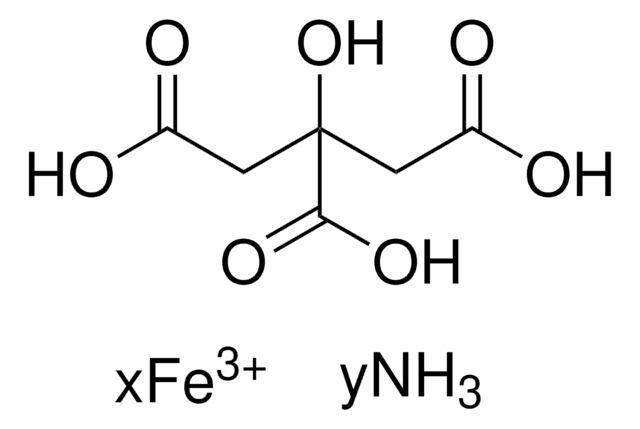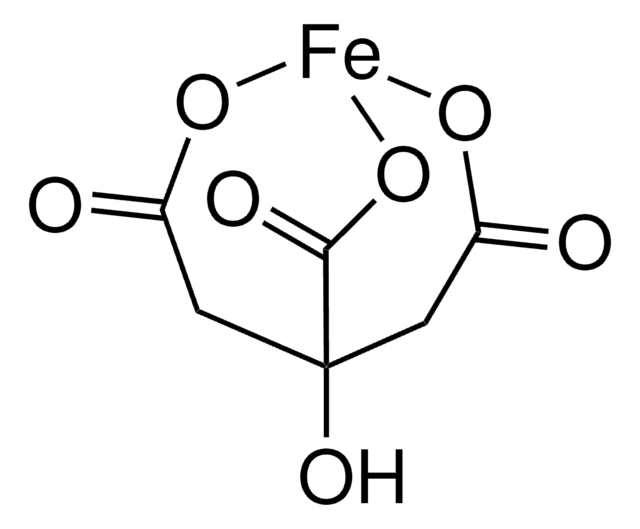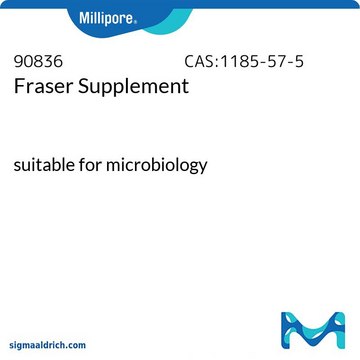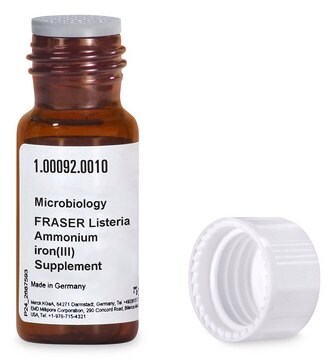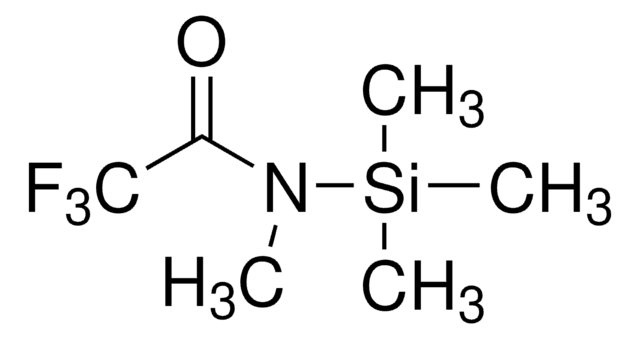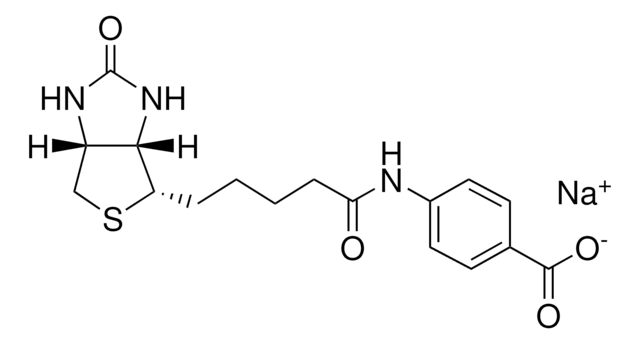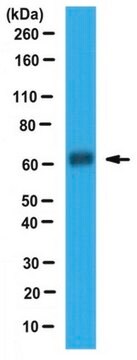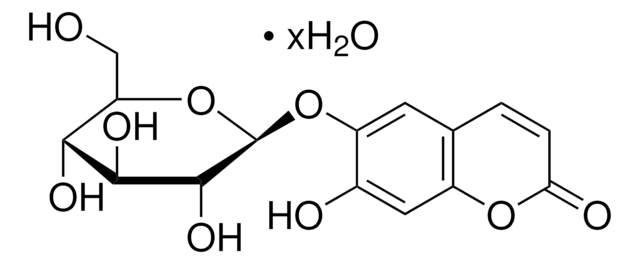F5879
Ammonium iron(III) citrate
reagent grade, powder
Sinónimos:
Ammonium ferric citrate, Ferric ammonium citrate
About This Item
Productos recomendados
grado
reagent grade
Nivel de calidad
Formulario
powder
composición
Iron, 16.5-18.5%
trazas de catión
Fe: 16.5-18.5%
cadena SMILES
N.OC12CC(=O)O[Fe](OC(=O)C1)OC(=O)C2
InChI
1S/C6H8O7.Fe.H3N/c7-3(8)1-6(13,5(11)12)2-4(9)10;;/h13H,1-2H2,(H,7,8)(H,9,10)(H,11,12);;1H3/q;+3;/p-3
Clave InChI
FRHBOQMZUOWXQL-UHFFFAOYSA-K
¿Está buscando productos similares? Visita Guía de comparación de productos
Descripción general
Aplicación
Código de clase de almacenamiento
11 - Combustible Solids
Clase de riesgo para el agua (WGK)
WGK 1
Punto de inflamabilidad (°F)
Not applicable
Punto de inflamabilidad (°C)
Not applicable
Elija entre una de las versiones más recientes:
¿Ya tiene este producto?
Encuentre la documentación para los productos que ha comprado recientemente en la Biblioteca de documentos.
Los clientes también vieron
Nuestro equipo de científicos tiene experiencia en todas las áreas de investigación: Ciencias de la vida, Ciencia de los materiales, Síntesis química, Cromatografía, Analítica y muchas otras.
Póngase en contacto con el Servicio técnico